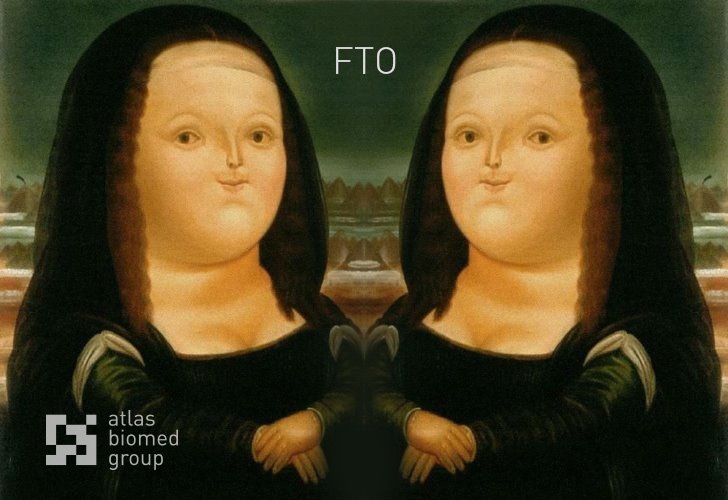What genes give superpowers
While we are exhausted in the gym or are waiting with horror for a hangover after one glass of champagne, these lucky ones are given nothing. Is it true that genetics generously distributes gifts to someone, and leaves someone with a constant feeling of hunger?
True. And in Atlas, we have several examples that confirm these words.

This gene encodes a protein that is involved in DNA transcription (copying text when copying) as a suppressor. In addition to this important work, the BHLHE41 gene is responsible for regulating circadian rhythms - our biological clock. In part, they are associated with external factors - the change of day and night, but are endogenous in nature: even in isolation from sunlight and the daily rhythm of the planet, we will go to bed and wake up. The human cycle is 24-25 hours, of which we need to sleep 7-8 hours. However, mutational variations of the BHLHE41 gene can make their own adjustments to our schedule: some lucky people by their genetic nature manage to get enough sleep in 5-6 hours.

Two genes encode enzymes that are involved in the metabolism of alcohol - alcohol dehydrogenase and acetaldehyde dehydrogenase. The process takes place in two stages: first, ADH1B breaks down ethanol to acetaldehyde - and alcohol intoxication ends there. But the hangover begins: acetaldehyde is poisonous, and its presence in the blood causes poisoning with all the ensuing: headache, nausea, dizziness. This continues until the second enzyme ALDH2 deals with acetaldehyde and turns it into vinegar (solid and safe in the small concentration in which it is formed).
The coordinated work of two genes helps the body cope with alcohol so quickly that you do not have time to either say stupid things from drunken eyes or suffer a hangover (real James Bond). Deviations in the work of these two genes lead to interesting consequences. If the first ADH1B gene works well, and the second ALDH2 works poorly, alcohol will quickly break down to acetaldehyde, but this will not go further. Pleasant intoxication will quickly disappear, and a long heavy hangover will come: a red face, a fast heartbeat - all that we associate with alcohol intolerance. If, on the contrary, the first gene breaks away from its work, and the second quickly breaks down a hangover poison, you will find a long state of intoxication, no hangover, in the morning with a cucumber. It sounds very attractive, but do not rush to envy such superpowers:

Fat Mass And Obesity Associated - this is the full name of this gene, which encodes an energy protein and is responsible for metabolism in general. The work of this gene is associated with the onset of a feeling of fullness. A certain variant of the gene can lead to the fact that for some it comes late: say, about twenty minutes after the body has really satiated and received everything necessary. Naturally, twenty additional minutes of overeating can lead to - and lead to - obesity. And genetic superheroes with the normal version of the FTO gene can eat and not get fat (though they eat a little).

Another reason for overweight (and blood glucose) is a love of sweets. Evolution has played a very cruel joke with us. At the dawn of mankind, she taught us to choose sweet foods: they were more likely to be nutritious and not toxic. But after a couple of millions of years, the same gene, instead of leading us to useful products, leaves us alone in front of a glittering, high-calorie flare storefront with cheesecakes, profiteroles and eclairs. Someone was lucky: their sensitivity to sweets is normal, and dessert is not so important for them. The rest - unhappy with a reduced sense of sweetness - it is always small and always want more.

FTO / SLC30A8: run in the morning
After out of nowhere the extra pounds appeared, we go to the gym. But here we will be disappointed: someone is engaged every day and quickly gets in shape, while others have to squat and pull more - and it seems that everything is wasted. The FTO gene, already familiar to us, plays an important role in the fitness club: in addition to the desire to eat, it also determines the effectiveness of physical activity and the rate of burning fat mass during physical activity. Someone, alas, has to work harder to achieve the same or lesser results.
Another gene, SLC30A8, encodes a zinc transporter protein that is involved in insulin synthesis. He is responsible for the speed of recovery after exercise. An incorrect genotype can increase recovery time up to 48-72 hours between workouts: more often it will be simply useless to do.

The quick burning of fat mass or the unwillingness of the will for sweets look like toy superpowers in the face of a real superman: the HIV resistance gene. CCR5 encodes a chemokine receptor protein that plays an important role in the functioning of the immune system. A certain gene mutation makes it impossible to attach HIV to the T-cell: it is like congenital and lifelong vaccination. People with such a genetic “vaccination” (homozygotes) are only 1-2%, another 18-20% heterozygotes ( data on the European population ), but this option does not provide complete protection, but only reduces the risk. Unfortunately, there is a side effect: it seems that this type of CCR5 gene increases the risk of West Nile fever and multiple sclerosis.

Most likely, any reader of this text has genetic superpowers. Which ones — the genetic test will show .
True. And in Atlas, we have several examples that confirm these words.

BHLHE41: a dream for wimps
This gene encodes a protein that is involved in DNA transcription (copying text when copying) as a suppressor. In addition to this important work, the BHLHE41 gene is responsible for regulating circadian rhythms - our biological clock. In part, they are associated with external factors - the change of day and night, but are endogenous in nature: even in isolation from sunlight and the daily rhythm of the planet, we will go to bed and wake up. The human cycle is 24-25 hours, of which we need to sleep 7-8 hours. However, mutational variations of the BHLHE41 gene can make their own adjustments to our schedule: some lucky people by their genetic nature manage to get enough sleep in 5-6 hours.

ADH1B & ALDH2: I'll quit drinking tomorrow
Two genes encode enzymes that are involved in the metabolism of alcohol - alcohol dehydrogenase and acetaldehyde dehydrogenase. The process takes place in two stages: first, ADH1B breaks down ethanol to acetaldehyde - and alcohol intoxication ends there. But the hangover begins: acetaldehyde is poisonous, and its presence in the blood causes poisoning with all the ensuing: headache, nausea, dizziness. This continues until the second enzyme ALDH2 deals with acetaldehyde and turns it into vinegar (solid and safe in the small concentration in which it is formed).
The coordinated work of two genes helps the body cope with alcohol so quickly that you do not have time to either say stupid things from drunken eyes or suffer a hangover (real James Bond). Deviations in the work of these two genes lead to interesting consequences. If the first ADH1B gene works well, and the second ALDH2 works poorly, alcohol will quickly break down to acetaldehyde, but this will not go further. Pleasant intoxication will quickly disappear, and a long heavy hangover will come: a red face, a fast heartbeat - all that we associate with alcohol intolerance. If, on the contrary, the first gene breaks away from its work, and the second quickly breaks down a hangover poison, you will find a long state of intoxication, no hangover, in the morning with a cucumber. It sounds very attractive, but do not rush to envy such superpowers:

FTO: close the refrigerator
Fat Mass And Obesity Associated - this is the full name of this gene, which encodes an energy protein and is responsible for metabolism in general. The work of this gene is associated with the onset of a feeling of fullness. A certain variant of the gene can lead to the fact that for some it comes late: say, about twenty minutes after the body has really satiated and received everything necessary. Naturally, twenty additional minutes of overeating can lead to - and lead to - obesity. And genetic superheroes with the normal version of the FTO gene can eat and not get fat (though they eat a little).

TAS1R3: also get away from the cake display
Another reason for overweight (and blood glucose) is a love of sweets. Evolution has played a very cruel joke with us. At the dawn of mankind, she taught us to choose sweet foods: they were more likely to be nutritious and not toxic. But after a couple of millions of years, the same gene, instead of leading us to useful products, leaves us alone in front of a glittering, high-calorie flare storefront with cheesecakes, profiteroles and eclairs. Someone was lucky: their sensitivity to sweets is normal, and dessert is not so important for them. The rest - unhappy with a reduced sense of sweetness - it is always small and always want more.

FTO / SLC30A8: run in the morning every day
After out of nowhere the extra pounds appeared, we go to the gym. But here we will be disappointed: someone is engaged every day and quickly gets in shape, while others have to squat and pull more - and it seems that everything is wasted. The FTO gene, already familiar to us, plays an important role in the fitness club: in addition to the desire to eat, it also determines the effectiveness of physical activity and the rate of burning fat mass during physical activity. Someone, alas, has to work harder to achieve the same or lesser results.
Another gene, SLC30A8, encodes a zinc transporter protein that is involved in insulin synthesis. He is responsible for the speed of recovery after exercise. An incorrect genotype can increase recovery time up to 48-72 hours between workouts: more often it will be simply useless to do.

CCR5: HIV resistance
The quick burning of fat mass or the unwillingness of the will for sweets look like toy superpowers in the face of a real superman: the HIV resistance gene. CCR5 encodes a chemokine receptor protein that plays an important role in the functioning of the immune system. A certain gene mutation makes it impossible to attach HIV to the T-cell: it is like congenital and lifelong vaccination. People with such a genetic “vaccination” (homozygotes) are only 1-2%, another 18-20% heterozygotes ( data on the European population ), but this option does not provide complete protection, but only reduces the risk. Unfortunately, there is a side effect: it seems that this type of CCR5 gene increases the risk of West Nile fever and multiple sclerosis.

Most likely, any reader of this text has genetic superpowers. Which ones — the genetic test will show .
